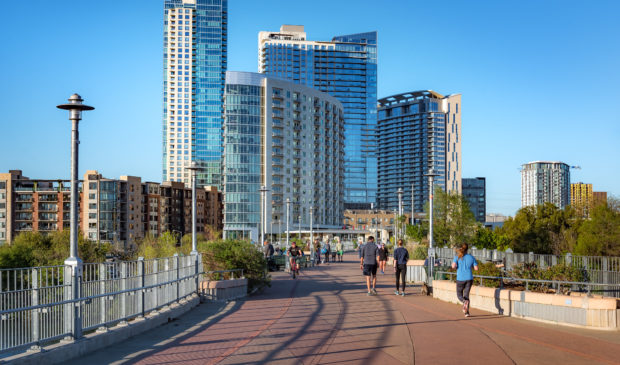Reshaping the land development code conversation
Monday, April 8, 2019 by
Ryan Thornton Still haunted by the misinformation battles of CodeNEXT, the Pedestrian Advisory Council passed two recommendations Monday, April 1, to help shift the land use conversation and support City Council as it takes up discussion of a new development code beginning later this week.
The first recommendation is a predictably pedestrian-oriented response to City Manager Spencer Cronk’s questions to Council regarding the scope of a potential code rewrite. To all five questions, PAC unanimously chose to surpass the third draft of CodeNEXT in favor of even greater walkability, more plentiful affordable housing and higher mixed-use density. (Notably, the recommendation differs from all responses from Council members so far, affirming the need to reduce the impact of compatibility standards to a greater extent than CodeNEXT.)
The second recommendation aims to help steer the public engagement process so that polarizing words like “density” are grounded in a local context that allows the public to visualize what more housing in Austin neighborhoods may actually look like under a new code.
Adam Greenfield, vice chair of PAC, said he drafted the recommendation based on what he saw when he moved to Austin in 2016 as the city was working on a code rewrite.
“The way I was interfacing with the conversation was it was highly technical,” Greenfield said. “It was a lot of reliance on maps and figures and things I think that the average person just didn’t understand at all and I think that made it very exploitable in terms of the fears that people had.”
Greenfield’s recommendation highlights the fear CodeNEXT incited throughout the city as seen in the prevalence of anti-density campaigns such as the “CodeNEXT Wrecks Austin” yard signs that were seen in various neighborhoods.
As the city starts deliberating again on the development code, the recommendation suggests it make use of images that clearly demonstrate what practical steps like decreasing minimum lot sizes, reducing parking requirements or allowing mixed-use development might look like in different parts of the city.
Rather than residential towers next to single-family homes, or neighborhoods demolished to make way for luxurious master-planned communities, the recommendation depicts familiar Austin streets with subtle changes like trees lining the streets, complete sidewalks, bike lanes, and buildings lining sidewalks rather than sitting back from the right of way.
On the whole, the images Greenfield chose presume that development under the new code will make the environment more pleasant through incremental changes, rather than subjecting every corner of the city to the unrestrained will of developers. Greenfield said the images are meant to communicate that “sudden, sweeping change is not really what this is about.”
According to Greenfield, one of the barriers to understanding during CodeNEXT was that a large part of the public identified the vision of the proposed development code with whatever buildings were newest and biggest in the city. As PAC member Kimberly Levinson said, CodeNEXT made people “afraid that the worst monstrosities were going to become the norm.”
On the contrary, Greenfield said, most of what people hate being built today is a consequence of the current code.
While the recommendation ultimately passed, there was some doubt about its timeliness given that Council is hoping to make significant progress on a code rewrite by the end of this year.
Chair Jay Crossley worried that the idea of a new public engagement effort at this point could be leveraged by hesitant Council members as an excuse to further postpone the rewrite process.
“We’re $8 million and six years into this process; introducing the idea that we need a new community visioning process at this time is a significant curveball,” he said.
With Council members Paige Ellis and Natasha Harper-Madison just coming on board this year, PAC alternate Tom Wald said the recommendation could be a good primer for Council members on what PAC considers smart development as well as a recommendation for a potential public engagement effort.
Photo by Bill Dickinson made available through a Creative Commons license.
The Austin Monitor’s work is made possible by donations from the community. Though our reporting covers donors from time to time, we are careful to keep business and editorial efforts separate while maintaining transparency. A complete list of donors is available here, and our code of ethics is explained here.
You're a community leader
And we’re honored you look to us for serious, in-depth news. You know a strong community needs local and dedicated watchdog reporting. We’re here for you and that won’t change. Now will you take the powerful next step and support our nonprofit news organization?






